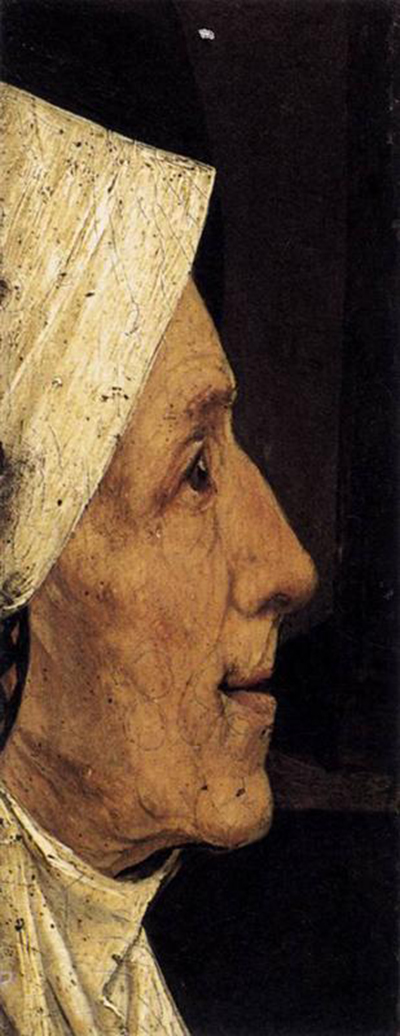Head of an Old Woman is a tiny fragment of wood panel, now on display at the Museum Boijmans Van Beuningen
There has been bouts of research to try to understand more about this small portrait, mainly as to where it was cropped from originally and why. With many of Hieronymus Bosch's paintings being damaged over the years, it is quite possible that it was cut out from a larger work that was beyond repair.
This small work stands at 5cm wide by 13cm tall but still includes enough detail to make it worthy of note. Many of the artist's works were a collection of smaller elements drawn together in a complex composition, such as with his most famous painting, The Garden of Earthly Delights.
Whilst not being a prominent piece within his overall career, this small work has appeared in several significant exhibitions in recent years, both internally and externally through short term loans. The Collection of Museum Boijmans Van Beuningen – Bruegel's The Tower of Babel and Great 16th Century Masters in 2017 was one of the most recent exhibitions in which it was included.
The Boijmans Collection also has several other works from Bosch's career, which is an impressive achievement considering how few are still remaining all these years later. You should also find works from other famous artists here too, such as Pieter Bruegel the Elder, Wassily Kandinsky, Gustave Courbet and Eugene Delacroix.
There own collection of work and occassional exhbitions tend to focus on the Northern Renaissance and the Dutch Golden Age. These two movements are easier to source art locally and always manage to draw in large crowds. Much of the work from the stars of these movements remains dotted around Northern Europe, and is less in demand once you get past the likes of Rembrandt.




